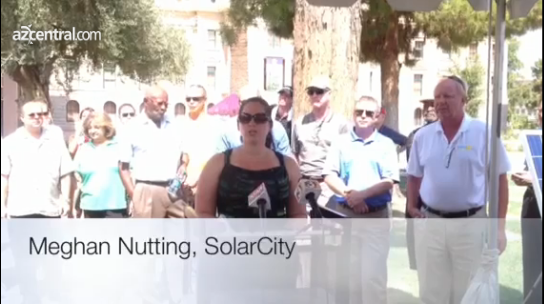From the Arizona Republic:
About 100 solar-industry workers protested at the state Capitol on Tuesday, hoping to draw interest in a battle with Arizona Public Service Co. that could alter the rooftop-solar industry in the state.
APS has proposed changing the way it gives new customers credit for the electricity their solar panels send to the power grid. The changes would not affect the 18,000 current APS customers with solar, or those who have a reservation to get their panels by Oct. 15.
SolarCity Corp., a California rooftop-solar company, is leading the opposition, but representatives from a variety of solar companies, including REC Solar, Wilson Electric and Kyocera were present Tuesday.
Under tents on the Capitol grounds, they spoke to the media about the importance of solar. Some carried signs supporting the industry, and most wore solar-company logos.
“It’s frightening and disappointing to think that solar energy in Arizona could be undermined by APS,” said Mark Holohan, solar-division manager at Wilson Electric in Tempe. “Arizona’s monopoly utilities are attempting to limit solar due to fears about competition.”


